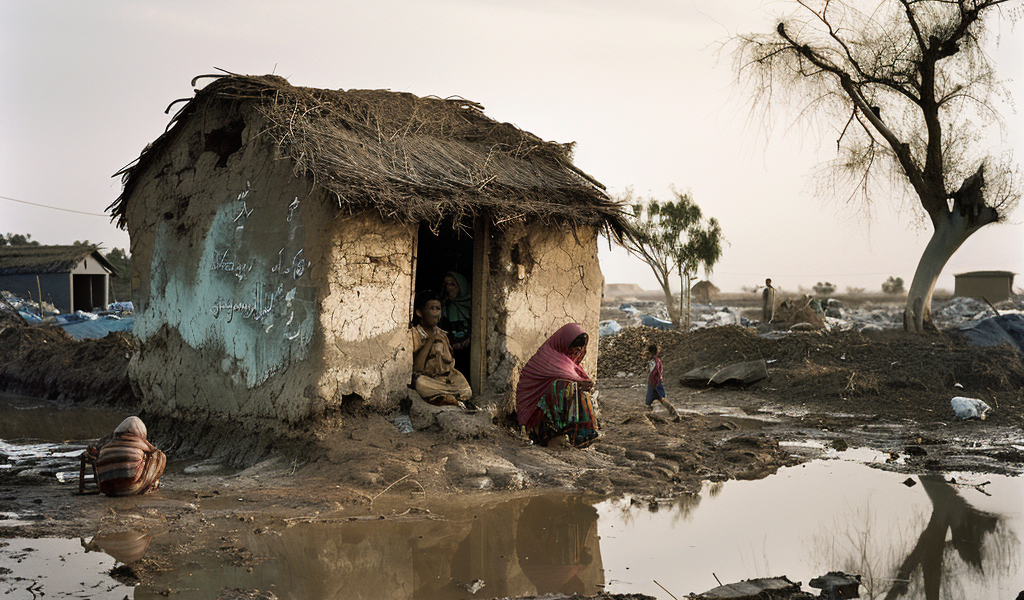In the aftermath of the catastrophic floods that struck Pakistan in 2022, the southern province of Sindh continues to grapple with a public health crisis, particularly the rampant spread of waterborne diseases. The situation remains dire for many families, especially in rural areas where access to clean water and healthcare is severely limited.
In the village of Sujawal, Fatima Bibi, a mother of five, faces a heartbreaking reality as two of her children have succumbed to malaria, a disease transmitted by mosquitoes. Her youngest child, three-year-old Fizza, is currently battling the illness for the second time in just a month. Despite receiving medication from a local hospital, Fatima fears it may not be enough to save her child.
Living in a small mud house without basic sanitation facilities, Fatima and her family must walk 30 minutes to fetch clean drinking water. The village is plagued by dirt and litter, creating a breeding ground for mosquitoes, which exacerbates the health risks for residents.
“What can we do? We’re poor and have to live here – where would we go? We don’t have the resources to settle in the city or take care of the kids there,” Fatima lamented, highlighting the struggles faced by many families in the region.
Waterborne diseases such as cholera, dysentery, and malaria are prevalent in this community, with every family reportedly affected. The consequences of the floods, which submerged a third of the country and impacted approximately 33 million people, are still being felt two years later. The ongoing spread of these diseases, particularly among vulnerable children, poses a significant public health threat.
Health officials have raised alarms about the potential for a public health emergency if urgent action is not taken. The World Health Organization reported a staggering increase in malaria cases across Pakistan, rising from 400,000 in 2021 to over 1.6 million in 2022. Regions like Sindh and Balochistan have seen some of the highest rates of infection following the floods.
In Sindh, many areas are still inundated with stagnant water, preventing floodwaters from receding and contributing to the spread of diseases. Contaminated drinking water and inadequate sanitation facilities exacerbate the situation, leaving families vulnerable to illnesses that can be deadly, especially for young children.
Local residents have been vocal in their demands for immediate action to address the health crisis. Community leaders and health officials are calling for improved sanitation measures, access to clean water, and increased healthcare resources to combat the ongoing threat of waterborne diseases.
As the situation unfolds, the resilience of families like Fatima’s is tested daily. With limited resources and support, they are left to navigate the challenges posed by both the aftermath of the floods and the looming threat of disease. The urgent need for comprehensive public health interventions and community support is more critical than ever as Pakistan continues to recover from one of the worst natural disasters in its history.
While the government and various organizations work to address these pressing issues, the voices of those affected must be heard. The plight of families in rural areas like Sujawal is a stark reminder of the long-lasting impacts of natural disasters and the need for sustainable solutions to prevent similar crises in the future.
As the world watches, it is imperative that concerted efforts are made to ensure that vulnerable communities receive the assistance they need to rebuild their lives and safeguard their health. The fight against waterborne diseases in Pakistan is far from over, and the resilience of its people will be tested in the months and years to come.





